SICK Tools, measuring instruments and protection


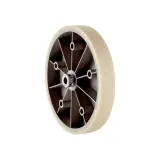
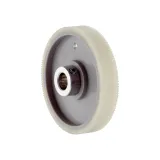

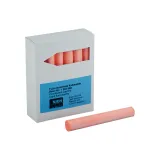
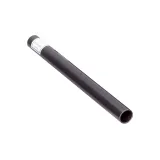


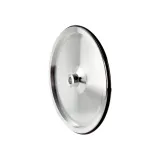

sick measuring instruments for setup, QA, and maintenance
Handheld and bench units that help electricians, automation techs, and commissioning teams verify signals and safety before a line goes live. Expect clear displays, shock-resistant housings, and probes that actually fit inside crowded cabinets. Measurement domains span voltage/current, loop integrity, temperature, vibration, optical alignment, air flow/pressure, and fieldbus diagnostics. Typical operating limits: −10…+50 °C, 10–90 % RH, with IP40–IP54 on handhelds and CAT III/CAT IV ratings where mains is involved.
sick tools and measuring devices range and form factors
Multimeters with true-RMS and low-impedance (LoZ) modes for ghost-voltage hunting; clamp meters with flexible Rogowski coils for fat feeders; 4–20 mA loop calibrators with source/sink and 24 V loop power; insulation testers up to 1 kV with PI/DAR calculation; IR thermometers and thermal spots for quick heater checks; laser alignment kits for photoelectric heads; tachometers and encoders testers for drives; handheld manometers and vane anemometers for cabinet ventilation checks; network analyzers for PROFINET/EtherNet-IP health; and portable oscilloscopes for chasing transients on 24 V DC rails.
sick measurement systems specifications and standards
Electrical instruments carry CAT rating printing on the front (CAT III 600–1000 V or CAT IV 300–600 V typical), fused current inputs, and 10 MΩ input impedance on voltage ranges. Accuracy bands run 0.05–0.5 % on DC volts, 0.5–1.5 % on AC true-RMS, 0.02 mA resolution on loop ranges, and 0.1 MΩ steps on insulation tests. Environmental and EMC match EN 61326-1; safety aligns with IEC 61010-1/-2-030; overvoltage and pollution degree are printed in the datasheet. Data logging over USB-C/Bluetooth, min/max/peak capture, and trend graphs speed root-cause work when noise or thermal drift is intermittent. Rugged shells include 2 m drop ratings and replaceable holsters; displays stay readable under high bay lighting.
sick protection equipment for workshops and lines
Lockout/tagout kits with keyed hasps, breaker clamps, and valve covers; HV gloves and dielectric mats marked to IEC 60903/IEC 61111; arc-flash face shields and jackets with ATPV labels for live-work risk categories; insulated screwdrivers and torque drivers for terminal work; probe tip sets with GS38-style shrouds; cabinet shrouds for temporary IP while doors are open; and portable RCD/GFCI testers for temporary power. Cases and foam inserts keep kits intact between shifts; barcode tags help inventory control.
Applications and compatibility across plants
Commissioning: prove 24 V rails under inrush, verify encoder phasing, and source 12/24 mA to sweep analog inputs. Maintenance: trend motor current to catch bearing wear, check cabinet delta-T with spot IR, log sag/swell on shared feeders. Safety: validate E-stop loop integrity and contactor EDM timing, test ground continuity after panel rebuilds, and document insulation resistance after washdowns. Quality: confirm temperature windows on heat tunnels, air velocities in make-up cabinets, and light levels at QA benches.
Integration with SICK controllers and sensors
Loop sources plug straight into IO-Link masters via 4–20 mA simulators; encoder testers speak HTL/TTL and SSI/BiSS so you can sanity-check wiring before tying into the PLC; optical alignment tools show margin on through-beam/photoelectric heads; protocol analyzers decode device alarms so you aren’t blind when the PLC only exposes “fault.” When space is tight, magnetic hangers and slim probes fit doors without pinching cables; buffered leads keep noise off high-impedance inputs during measurement.
Technical notes that spare rework
- Use LoZ on mains troubleshooting to collapse ghost voltages from long runs.
- For VFD cabinets, clamp meters need low-frequency and inrush capture; harmonics skew cheap meters
- Insulation tests at 500/1000 V can upset electronics—lift conductors or use guarded measurement points.
- Thermal checks: spot IR needs known emissivity; use a matte sticker on shiny busbars for credible readings.
- Pressure/flow probes: zero to ambient before duct insertion; upstream elbows introduce error—measure after 10× diameter where possible
Seltion criteria for B2B buyers
Define the CAT environment first, then pick ranges and accuracy bands that match your tolerances. For electrical teams, prioritize sick electrical measuring instruments with fused current jacks, high-energy fuses, and audible continuity with fast response (<10 ms). Automation teams should favor loggers with time-stamped CSV and battery life for full shifts. Choose calibration access—front banana jacks for loop work, mini-DIN for temperature probes—so adapters aren’t a bottleneck. If fleets rotate between sites, standardize chargers/batteries and carry spare fuses/probe sets in every case.
Service, calibration, and documentation
Annual or 24-month intervals are typical depending on audit rules; shock events justify ad-hoc checks. Document measurement uncertainty on reports, store certificate IDs in the CMMS, and link them to panel tags. For gauging lines, keep two tiers: field units for daily checks and a single higher-accuracy reference in the lab. Where you audit third-party OEM skids, bring sick industrial testing tools dedicated to isolation/insulation so production meters aren’t pulled from service. For audit trails, handhelds that sync timestamps to the site NTP keep logs consistent with PLC alarms. Projects that need traceable field verification often specify sick calibration and inspection devices with pass/fail templates to speed sign-off.
Ordering kits and accessories
Bundle probes by discipline: high-energy leads, crocodile clips, and probes with GS38 hoods for electrical; PT100/TC-K sets for HVAC; low-pressure tubing and Pitot for airflow; clamp-on flex coils for MCC rooms. Add panel-safe magnets, rubber boots, and windowed cabinet ports. For sensor alignment, keep a kit with reflectors, alignment cards, and cleaning swabs. When a project spans months, put spares into each case—batteries, fuses, tips—so downtime doesn’t depend on central stores. If the schedule calls for turnkey toolboards, reference sick tools and measuring devices on the BOM and include wall cradles and asset labels from day one.
Advantages of working with Bankoflamps
We align tool lists to your commissioning plan and show live EU stock before windows are booked. Quotes land in about an hour with EAN/MPN so ranges, CAT ratings, and probe sets don’t drift mid-tender. Your portal exposes lead times, shipment status, and downloadable price files; pricing validity is held to project gates. Approved clients can use post-payment up to 30 days. We consolidate by crew or area to cut freight and bench time, and your account manager cross-checks measurement domains, CAT class, probe types, calibration intervals, accessory kits, and carrying cases against your method statements—so cases arrive site-ready and teams start measuring, not chasing parts.